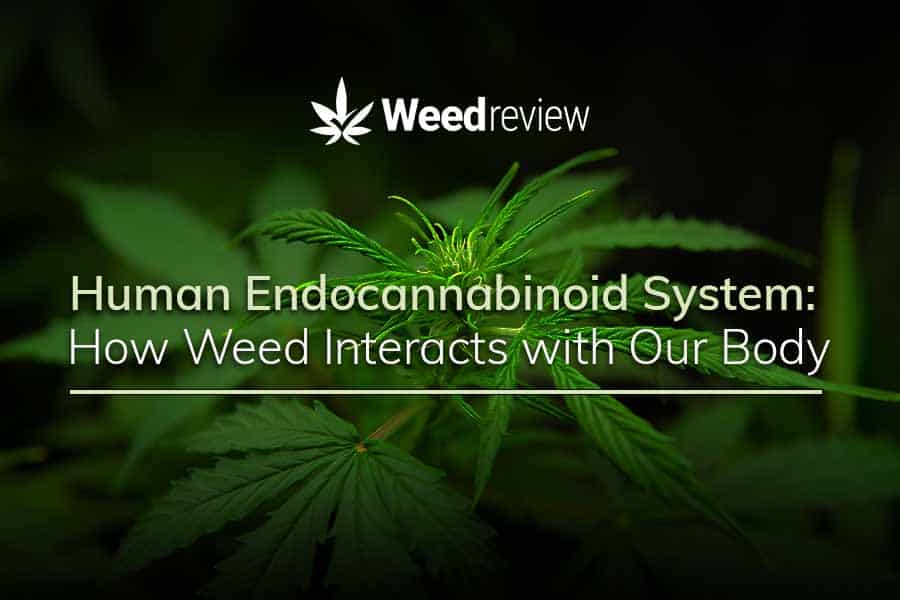Human Endocannabinoid System: What is ECS and How does it Work?

Table of Contents
‘If God didn’t want us to enjoy weed, why did He give our body the endocannabinoid system?’
Discovered in the 1990s, the endocannabinoid system (ECS) is like a control centre in your body that helps ensure everything is going well. It is involved in balancing a bunch of sensations like pain, hunger, happiness, and mood. The ECS does so with the help of chemicals called endocannabinoids – produced internally by your system.
Here’s the interesting bit – cannabinoids found in marijuana, like delta-9-tetrahydrocannabinol (THC) and cannabidiol (CBD), also engage with the ECS in the same way as endocannabinoids. That’s why weed is known to stimulate hunger, reduce pain, among other things.
In this article, we take a closer look at the working of the ECS and how weed produces its effects on the body.
ECS Simplified
The endocannabinoid system is a complex cell-signalling, neurotransmission system spread throughout your body. Its main job is maintaining homeostasis – ensuring balance and harmony among all bodily functions needed for healthy survival.
In simpler terms, your body’s healthy functioning results from several biological processes working together to keep you going. The ECS is a master regulator that oversees the working of these processes. When these actions are out of order, the ECS kicks in. Here are a couple of examples:
- The ECS increases your body temperature when you are sick – to kill the parasite that is bothering your body. The fever is no longer needed when the bug dies, and the temperature returns to normal.
- When you are injured or hurt, the ECS signals the body to release endocannabinoids to regulate the pain and inflammation. Once you recover, the endocannabinoids are no longer needed, and the ECS tells the enzymes to break them down.
Keeping this in mind, the functions of ECS cover a broad range of physiological activities:
- Pain sensation: Modulates pain perception and can help to reduce chronic pain, neuropathic pain, and inflammation.
- Immune function: Assists in regulating the immune response, which can help reduce inflammation and improve overall health.
- Mood: Oversees the release of neurotransmitters such as dopamine and serotonin, which affect mood regulation.
- Appetite: Helps regulate appetite and food intake, which can help to maintain a healthy body weight.
- Sleep: Assists in balancing sleep patterns, which can help to improve overall sleep quality.
- Cardiovascular function: Regulates cardiovascular function through its effect on blood pressure, heart rate, and blood flow.
- Reproduction and fertility: Plays a role in regulating the production of sex hormones and the proper functioning of reproductive organs.
- Memory and learning: Modulates the process of memory formation & retrieval.
Many scientists believe that when the ECS is out of order or dysfunctional – meaning it is not working the way it should due to genetic or environmental factors – it can contribute to contracting diseases and health problems. This is known as clinical endocannabinoid deficiency (CECD) and appears to be particularly for diseases that respond to cannabis treatment. Still, given the widespread role of ECS, other health conditions may also be a factor of CECD – but more studies are needed.
That’s why it is believed that taking weed, whether it is the psychoactive THC or non-psychotropic CBD, is a way of supplementing or supporting the functioning of your endocannabinoid system. However, weed is not a cure-all solution for all problems – it is a supplement at best to modern, conventional treatments. The team at Weed Review strongly recommends speaking to a doctor if you want to add cannabis to your treatment plan.
Parts of the Endocannabinoid System
The ECS comprises three main components: endocannabinoids, receptors, and enzymes.

Endocannabinoids
Endocannabinoids are molecules produced naturally by your body. They share a similar chemical makeup to cannabinoids found in plants – the only major difference is how they are produced.
Two endocannabinoids are of significant interest: anandamide (AEA) and 2-arachidonoylglyerol (2-AG).
- Anandamide, also known as “the bliss molecule,” regulates pain perception, mood, appetite, and memory.
- 2-Arachidonoylglycerol (2-AG) regulates immune function, pain perception, appetite, and sleep.
Both of these endocannabinoids are produced on demand by the body when needed.
Receptors
Endocannabinoids produce their response by binding themselves to protein molecules called receptors. There are two primary receptors that scientists have studied in great detail: CB1 and CB2.
- CB1 receptors are mainly found in the central nervous system, including the brain and spinal cord. These receptors regulate functions like pain, mood, hunger, and sleep.
- CB2 receptors are expressed largely in the immune and peripheral nervous systems. They are largely involved in reducing inflammation and modulating the immune response.
Scientists have also identified other receptors like GPR55, GPR18, TRPV1, and GPR119, which are still under study. Together, they cover the entire body.
Enzymes
Once endocannabinoids have carried out their tasks, they are broken down/metabolised by enzymes. There are two enzymes in the picture:
- Fatty acid amide hydrolase (FAAH): Responsible for metabolising anandamide.
- Monoacylglycerol lipase (MAGL): Responsible for breaking down 2-arachidonoylglycerol (2-AG).
By manipulating the activity of these enzymes, it is possible to increase the levels of endocannabinoids in the system – leading to therapeutic effects for different conditions.
You can find more information on the endocannabinoid system in this review article here.
How THC interacts with the body
THC is the compound that gets you high and stoned. It does so by strongly binding to the CB1 and CB2 receptors.
Since these receptors are present in your brain and body, THC causes a cascade of chemical reactions by ‘taking over’ your system.
- THC can cause the brain to increase dopamine levels, leading to more pleasure and happiness. This mechanism is also why weed can be addictive.
- It can reduce pain by binding to the CB1 receptors in your central nervous system. This action reduces the release of pain-related neurotransmitters, thus contributing to the long-held fact that weed can reduce pain.
- THC can stimulate your appetite and mood by engaging with the CB1 receptors in the hypothalamus and amygdala regions of the brain.
The psychoactive cannabinoid can also cause some users to experience paranoia, anxiety, and uneasiness. It is why the effects of cannabis vary from person to person and depend on a host of factors like genetics, tolerance, sensitivity, weight, dosage, etc.
Since THC is so powerful, long-term chronic use can have unwanted consequences.
How CBD interacts with the body
Cannabidiol is non-psychoactive and does not produce the intense high commonly linked with marijuana. This is because of the manner in which it engages with the CB1 and CB2 receptors.
While CBD binds to the receptors, it does not activate them the same way as THC. Instead, it modulates or oversees the activities of the receptors.
- CBD can reduce the high caused by THC; it does so by regulating the signals that have been triggered by THC’s binding to the receptors. This is why some believe CBD can counter THC’s effects and reduce your high.
- Cannabidiol can increase the levels of endocannabinoids like anandamide in your system by preventing the enzymes from metabolising them. As a result, the endocannabinoids can stay in your system longer and have more effects on your body.
- It can also enhance the signalling of CB2 receptors, which are involved in inflammatory and immune responses.
These actions are among the reasons cannabidiol has such a broad therapeutic profile and why many countries only allow for CBD while prohibiting THC consumption.
The way forward
There is still a lot that we don’t know about the endocannabinoid system. Unlocking its mysteries can lead to a better understanding of the human body and improve the use & effectiveness of medicinal cannabis for different conditions.
Considering what is known about the ECS, some may say that humans were meant to consume cannabis. At the very least, this natural plant can support the functioning of your system – but it needs to be done responsibly.
If you are interested in seeing what cannabis can do for you, you can check out Weed Review’s comprehensive knowledge hub to learn more about weed.

